TriLynx, in conjunction with its industry partners, provides integrated real-time data collection and management solutions that can be applied for hydrologic and environmental monitoring and warning systems. The following figure illustrates a typical system configuration, with the TriLynx NovaStar5 base station software as its foundation.
Data Collection
Rainfall, water level, atmospheric conditions, ground water, soil moisture, fire indices and water quality are all parameters that are measured in the field using an array of sensors. TriLynx teams with industry experts to provide comprehensive solutions for remote monitoring and data collection. TriLynx can provide guidance on the design and installation of remote monitoring networks integrating sensors and technologies from a variety of manufacturers and customized to meet specific monitoring needs.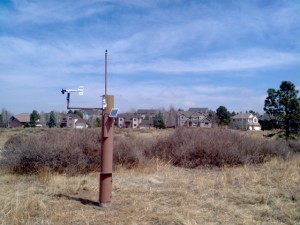
| Data | Vendors | |
|---|---|---|
| Precipitation | HydroLynx | Hach |
| Water Level | Campbell Scientific | OTT |
| Atmospheric (temp, RH, BP, wind) | Hydrological Services | Sutron |
| Ground Water | WaterLOG | YSI |
| Water Quality | TeleDyne | SonTek |
| Fire Weather | High Sierra | Druck |
| MetOne | Keller | |
Communication
Sensors installed at remote stations measure and collect data that must be transmitted to the NovaStar5 base station. Data collected by other organizations must be queried and ingested into NovaStar5 via a network feed. NovaStar5 can ingest data from any of the following telemetry and network sources: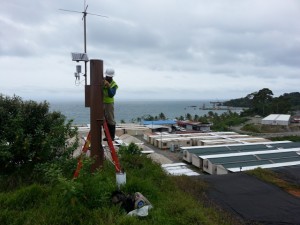
- ALERT/ALERT2 One-Way VHF/UHF Radio
- USGS web services
- Colorado State Division of Water Resources web services
- ORBCOMM Commercial Satellite
- HughesNet Commercial Satellite
- Cellular (Verizon, AT&T, T-Mobile)
- Two-way communication via radio, satellite or telephone
- Network IP Serial Feed
- Comma-separated files
- Standard Hydrologic Exchange Format (SHEF) files
- Other Web Services
Data Management – TriLynx NovaStar5 Base Station
The heart of the monitoring architecture is the TriLynx NovaStar5 base station, which ingests real-time data from multiple sources, manages the data, and generates notifications when observations cross threshold values. NovaStar5 allows import of data from industry standard formats including ALERT2 decoding, SHEF, web services, etc., and if a new format needs to be supported, TriLynx can enhance NovaStar5 as required. NovaStar5 features are listed below, with links to more detailed information on the NovaStar5 product page:
- Modern operating system/database/security
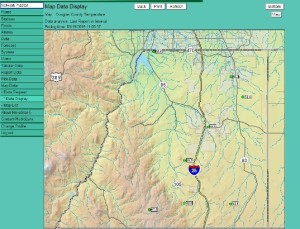
- Data collection
- ALERT technology
- Comprehensive data display
- Statistical analyses
- Supervisory Control and Data Acquisition (SCADA)
- Hydrologic forecasting with river routing and reservoir operations
NovaStar5 systems are implemented for reliability and redundancy:
- Run on dedicated computers or on virtual machines in customer’s environment or cloud
- Implement redundant systems at physically different locations to minimize system disruptions
- Operate in a client-server architecture for automated hot swap in the event one system goes down
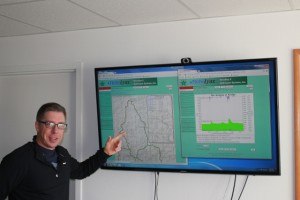
System Integration – TriLynx NovaStar5 Website and Integration
The NovaStar5 database utilizes the open source PostgreSQL database engine. Each NovaStar5 system can be accessed through a website by system users and administrators. Data from the database can also be exported in standard formats for integration with other customer systems. TriLynx provides integration services when additional capabilities are needed.
.
Alerts and Emergency Response – NovaStar5 Notification Features & Decision Support
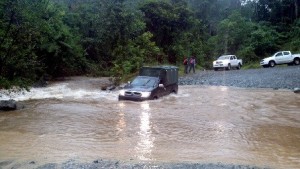
Data managed by NovaStar5 can be compared in real time against pre-defined alarm thresholds and when criteria are exceeded notifications can be sent by email, text messages and Twitter, as well as by radio/satellite telemetry to trigger remote sirens and/or roadway flashers. The following alarm thresholds can be configured:
- High, low and at limit
- Rate of Change with threshold limit
- IF-THEN-ELSE alarm logic combining rate of change and high/low limits
- No report
The NovaStar5 system features can be configured to detect critical conditions and notify customers about these conditions. TriLynx and its industry partners work with customers to truly define critical conditions given site-specific physical characteristics to implement systems that are integrated with emergency response plans and best utilize available data and NovaStar5 features for decision support. For example, multiple alarm thresholds can be defined to monitor conditions at roadways and critical facilities.
Supplemental tools have been designed by TriLynx’s industry partners that put the data from flood detection using remote hydrometerological monitoring directly at the service of emergency flood response and flood response planning. In the Flood Hazard Inventory Tool (FHIT), specific information about flood vulnerable infrastructure, homes and businesses is catalogued and mapped. Efficient, focused data collection in the field is typically the backbone of FHIT development for a flood vulnerable waterway, but information from a variety of sources (including as-builts, hydrology reports, flood studies, photographs, etc.) can be archived and then easily accessed through a map-based user interface. Flood vulnerabilities can be assigned by recurrence interval, allowing responders to easily determine where flooding problems are likely to appear first as well as where they will appear next. The process of developing the tool provides clarity about priorities for flood hazard mitigation and informs flood response planning. On-going updates of the tool allow it to become a repository for institutional knowledge about events and outcomes in a format that also readily supports critical decision-making with the data available during an emergency response event.

